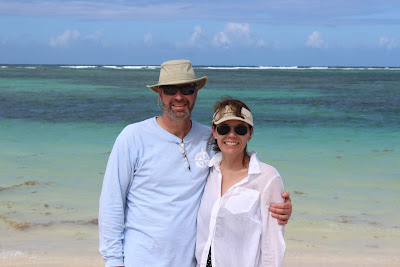By Kristy McCaffrey
Ada Blackjack, a petite Inupiat woman born in Alaska, was known as “The Female Robinson Crusoe” after living alone for two years as a castaway on an uninhabited island north of Siberia.
In 1921, Ada set sail on an expedition to Wrangel Island in the Arctic circle. She was given a one-year contract as a seamstress and cook, accompanying four men into the unknown wilderness.
Despite her Inupiat heritage, Ada wasn’t raised with any knowledge of hunting or wilderness survival. Her upbringing by Methodist missionaries ensured that her English was good and gave her a background in the Bible, housekeeping, sewing, and cooking white-people food.
 |
| Ada Blackjack and her son, Bennett, in 1923. |
At the age of 16, she married Jack Blackjack, a local dog musher, and together they had three children—two of whom who died—before Jack abandoned her. Her surviving child, a five-year-old son named Bennett, suffered from tuberculosis and general poor health, and Ada was forced to place him in an orphanage because she was destitute. But she vowed to find a way to earn enough money to retrieve him. It was at this time that she learned of an expedition heading for Wrangel Island, and they were looking for an Alaska Native seamstress who spoke English.
The expedition was the ill-conceived venture of Arctic explorer Vilhjalmur Stefansson. He recruited four young men to claim Wrangel Island for the British Empire, despite that Britain had never shown any interest in wanting it. Although Stefansson picked the team and funded the trip, he never intended to accompany them, and instead sent the very inexperienced crew into the unknown with only six months of supplies.
Although Ada had reservations about going on expedition with four men, she simply couldn’t pass up the salary of $50 a month, an unheard-of sum for a woman at the time. On September 9, 1921, she boarded a ship with Allan Crawford, 20, Lorne Knight, 28, Fred Maurer, 28, and Milton Galle, 19, and a cat named Victoria.
 |
| Ada Blackjack and the expedition crew to Wrangel Island. |
For the first year on Wrangel Island, the team was able to supplement their supplies with local game, but when winter descended and the promised boat to fetch them never came (it had to turn back due to impenetrable ice), they were forced to stretch their meager supplies for another year.
At the beginning of 1923, their circumstances had deteriorated. Everyone was starving and Knight was ill with scurvy. On January 28, 1923, Crawford, Maurer and Galle made the decision to set out on foot across the ice to Siberia in search of help, leaving Ada to care for the deathly ill Knight. The three men were never seen again.
 |
| The camp at Wrangel Island in late autumn. |
For six months, Ada was alone with Knight and cared for him, but it wasn’t easy. She struggled to do the work of four men while playing nursemaid, and Knight, in his misery, constantly berated her. On June 23rd, Knight died. After his death, Ada refused to fall into despair and was determined to survive.
For three months, Ada was alone. During this time, she learned to set traps for the foxes, taught herself to shoot birds, built a platform above her shelter so that she could spot polar bears in the distance, and crafted a skin boat from driftwood and stretched canvas. She even experimented with the expedition’s photography equipment, taking photos of herself standing outside camp.
On August 20, 1923, almost two years after first landing on Wrangel Island, she was rescued, along with the cat, Vic. Heralded as a hero and praised for her courage, Ada shied away from the attention, insisting that she was simply a mother who needed to get home to her son.
She was soon reunited with Bennett and used her payment, which was less than she had been promised, to seek treatment for his tuberculosis in a Seattle hospital. She later had a second son, Billy, and returned to live in Alaska.
While Stefansson and others profited from the story of the tragic expedition, Ada received none of the money, and smear campaigns against her character later emerged claiming that she had callously refused to care for Knight. Bennett’s health issues were never fully resolved, and he died of a stroke in 1972 at the age of 58. Ada passed a decade later at the age of 85, and she was buried beside Bennett.














































